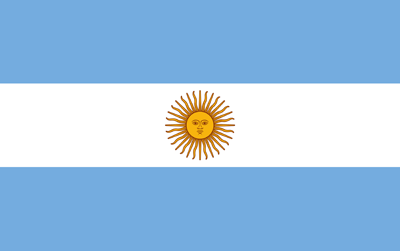Pakistan Local Cotton Market:
(Pakistan’s cotton production has sharply declined by over 63%, driven by climate challenges and pest infestations, leading to local shortages and price stability. The reduced crop arrivals and rising international prices have supported the firm market trend. As a result, spinners are increasingly relying on imports to meet demand)
1- The local cotton market showed a firm trend, caused by increased business activity and a rising international cotton market. Upward trend in international markets and stronger business activity are now supporting local prices.
2- The PCGA report revealed that only one-third of the cotton crop has arrived compared to last year, which has likely contributed to stable prices and maintained the firm trend. It appears that prices may not decrease as spinners had anticipated.
3- Pakistan’s spinners are turning to imports due to favorable prices, local shortages, and quality concerns, with agreements already signed for around 1.6 million bales
4- Cotton production in Pakistan has dropped by 63.55%, with ginning units producing only 45 bales per day, down from 100 bales. Punjab and Sindh saw sharp declines, with output falling by 65.13% and 62.5%, respectively. Climate change, extreme weather, and pest infestations are key contributors. Total domestic production is expected to fall short of national requirements at 7 million bales.
5- In India Cotton sowing had dropped to 11.24 million hectares as of 13 September, as compared with 12.36 million hectares during the same period last year, according to agriculture ministry data and which may help to keep the prices firm.
6- ICE cotton prices surged this week, reaching a new two-month high following a rate cut by the Federal Reserve. The easing of the dollar index yesterday is expected to boost US cotton exports. However, according to the USDA report released on Thursday, export sales were slightly lower.
7- The US dollar index slipped by 0.38 per cent to 100.64, making cotton purchases more attractive for overseas buyers. The index had fallen as low as 100.21 in the previous session, marking its lowest level in 13 months. The market is currently shifting from a rising interest rate environment to a falling interest rate model. A weaker dollar could further boost exports, and December cotton prices may climb to around 76 cents.
Local Yarn Market:
(The local yarn market continues to be under pressure, with sluggish business activity and stable yarn prices. Suppliers navigate a challenging operating environment, balancing low inventory levels against the backdrop of escalating energy and production costs)
1- The local yarn market exhibited a subdued trend this week, with limited business activity and stable yarn prices. Cash flow constraints remained a significant challenge for suppliers.
2- The arrival of imported yarn has contributed to a decline in demand for domestically produced yarn. Suppliers are balancing low inventory levels amidst rising energy and production costs.
3- PSF prices remained stable this week and are projected to decrease further by Rs 3-4/kg next week.
4- Faisalabad’s market displayed continued sluggishness with slow demand in the PV and fine-count yarn sectors. Cash flow constraints persisted, hindering business operations.
| Count | Price in Pak Rupees / 10 LBS | Price US$/Bale |
| 16/1 Carded Weaving | 3300 – 3400 | 480 – 495 |
| 20/1 Carded Weaving | 3400 – 3500 | 495 – 505 |
| 30/1 Carded Weaving | 3800 – 3920 | 550 – 570 |
| 20/1 Combed Weaving | 3851 – 4000 | 560 – 580 |
| 30/1 PC Carded Weaving 52:48 | 3150 – 3450 | 455 – 500 |
| 40/1 Combed Compact Weaving | 4426 – 4550 | 640 – 660 |
| 60/1 Combed Compact Weaving | 5800 – 6000 | 840 – 870 |
| 80/1 Combed Compact Weaving | 7950 – 8150 | 1150 – 1180 |
| 40/1 CVC Carded Weaving 60:40 | 3950 – 4100 | 570 – 595 |
Export Yarn Market:
(The export yarn market is experiencing a positive trend, fueled by currency appreciation and reduced interest rates, alongside rising cotton prices. While European customers remain hesitant, ongoing inquiries from Chinese buyers indicate the potential for increased orders soon. As suppliers are eager to sell, a new wave of buying activity is anticipated in the coming days)
1- The export yarn market has seen increased activity over the past few months, driven by currency appreciation and a reduction in interest rates by the Federal Reserve. This has led to improved export activity and a rise in inquiries, along with stronger order confirmations.
2- Cotton in domestic and international markets is increasing due to which suppliers increased their prices as well.
3- We might see another wave of buying in days to come as suppliers are interested in selling further.
4- China customers remained in the market and kept on floating inquiries. Business has been concluded as well and we might see another buying spree in days to come.
5- European customers have shown limited interest in purchasing, with regular inquiries but slow order confirmations. However, we may see order placements in the coming week.
| Export Yarn Prices | ||||||||||||||||
|
Local Fabric Market:
(Local fabric market experienced a slowdown in trading activity. The asking prices are getting firm due to increase in raw material prices. Looking ahead, we anticipate a slight improvement in market activity, driven by firm yarn and fabric price trends)
1- This week, the local fabric market experienced a slowdown in trading activity for both narrow and wider-width fabrics. Despite this, local brands remained active, securing orders after tough negotiations. In contrast, local finishing mills stayed on the sidelines, showing limited interest in sharing inquiries. Consequently, the week concluded with limited trading activity, although prices exhibited an upward trend due to firm yarn prices.
2- Sulzer loom units continued to book orders on a conversion basis but showed a preference for orders based on fabric rates to enhance profitability. These units offered slightly increased conversion rates.
3- Most weavers are fully booked for narrow-width fabrics until the end of October. They have also covered their wider-width looms until the third week of November 2024, and are offering onward deliveries.
Export Fabric Market:
(The export fabric market remained mixed with limited business activity, with stable prices in narrow width but very competitive prices in wider width fabric. It is expected that business activity will further pick up in the days to come)
1- The export fabric market continues at a slow pace due to less demand in general.
2- Customers from China, Korea, Japan, Indonesia, Vietnam, and Bangladesh have exchanged a decent number of inquiries; however, limited order placement was noticed.
3- The asking prices remained stable for the last few weeks.
4- Suppliers are struggling more and more to extend their sales to their regular customers and trying to offer competitive prices.
5- Currently, good suppliers are booked till end of Oct and offering early ~ mid-November onward deliveries.
6- European and USA buyers were engaged exchanging their inquiries both in narrow and wider-width fabric but limited buying was reported.
7- Wider width suppliers are comfortably booked for next 3 months due to good support from domestic buyers.
8- Prices for wider width remained very attractive and competitive, which attracted the customers.
| Local and Export Fabric Prices
| ||||||||||||
|
Bed Linen and Towel:
(Immediate focus on R&D and operational improvements is crucial to enhance competitiveness in the US market, especially in light of Indian market outperformance)
This week, the Home Textiles industry’s management participated in US Market Week, but initial feedback has been below expectations. Two key issues stand out:
Lack of R&D:
Our sector’s limited investment in research and development has hindered product innovation, particularly in high-demand areas like advanced fabric technology and design. This has reduced our competitiveness in the US market, where differentiation is crucial.
Ongoing Industry Challenges:
Persistent issues such as rising energy costs, inflation, and inconsistent government support are affecting production efficiency, resulting in higher costs and diminished market appeal.In contrast, Indian competitors are showcasing superior products, particularly high-thread-count textiles, supported by strong R&D. Their focus on innovation and quality has given them a competitive edge in the US market.
A final version of detailed and conclusive report on US Market Week will be available next week. Immediate steps are needed to address the R&D gap, improve production efficiency, and enhance market positioning to regain competitiveness
Garments:
(Because of global economic uncertainty, garment demand is often slow but it’s going towards improvement. Orders from the EU and the US were increased. The denim industry anticipates orders for sustainable products during the fourth quarter)
1- Pakistani garment factories are searching for large volumes to fill their production space.
2- Some factories have received orders from export customers and are filling them. Some major global apparel labels have also begun placing orders with their usual production operations. This has provided a gleam of hope for the forthcoming seasons.
3- Some American and European brands are also working on new developments for the FW25 season. At the same time, other garment factories are still waiting for orders to fill their manufacturing capacity.
4- Some garment manufacturers have recently received good orders from their customers. Overall, factories have delivery available 90 to 100 days after order confirmation. However, factories are booked till Mid of Dec 2024.
5- In the denim sector, the worldwide market is still striving to recover from inflation, but manufacturers are optimistic about the next seasons since consumers still have a high demand for sustainable products and are prepared to pay a premium for environmentally friendly products.
Crude Oil:
1- Crude Oil prices opened at USD 70.09 with higher level as compared to last week closing figures. in this week, crude oil prices showed mix trend and closed on higher side by the end of week.
2- In last day of the week, Crude Oil price closed at USD 71.92 with increase of 1.83 USD cents as of opening figure of week.
| Opening of Week | Closing Of Week | Change | |
| Price | 70.09 | 70.09 | 1.83 |
Exchange Rate:
1- In last week values of Pak rupee apricated against US Dollar’s, other major currencies showed mix trend in both interbank and open markets.
2- At the end of week, Euro closed on a positive note with figure of 1.11 and British Pound also closed on positive note with figure 1.33 against USD.
| Selling | Buying | |
| LC Sight | 276.03 | 275.98 |
| LC 120 Days | 262.77 | 262.72 |
| Open Market | 281.29 | 275.22 |
New York Cotton Future:
1- The New York Cotton Futures (NYCF) began the week on a stronger note compared to the previous week’s closing figures. Throughout the week, the market displayed mixed trends but ultimately closed higher across all key contracts.
2- October 2024 Closed at 72.21, marking a rise of 96 points from the previous week.
3- December 2024 Ended at 73.52, up by 70 points compared to the previous week.
4- March 2025 Finished at 75.14, reflecting an increase of 90 points from the previous week.
5- May 2025 Closed at 76.16, showing a gain of 91 points from the previous week.
Liver Pool Indices:
1- Liverpool Index A opened at 81.95 higher levels than the previous week of closing figure.
2- In this week Index “A” showed a mixed trend, hence closing on the higher side by the end of the week.
3- At the last day of the week, LPI “A” closed at 82.80 with an increase of 85 points.
| Opening of the Week | Closing of the Week | Change | |
| Index A | 81.95 | 82.80 | 0.85 |







